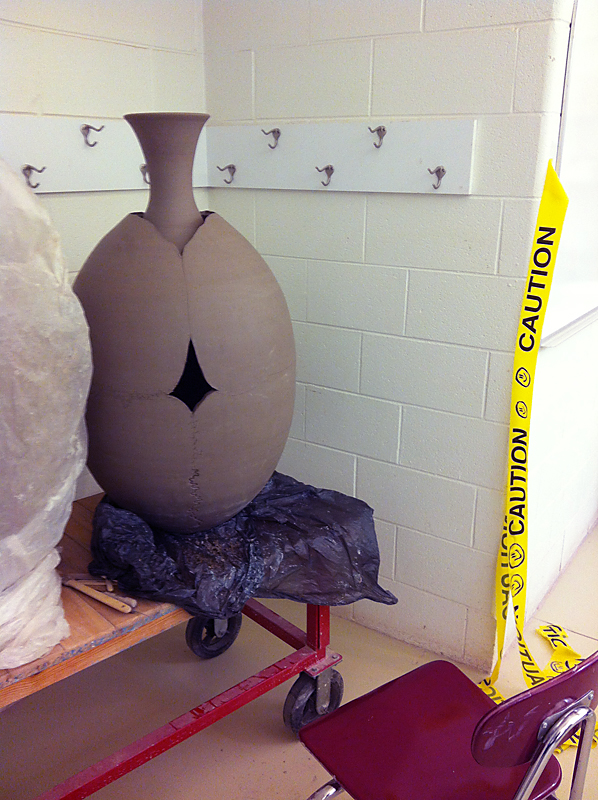
While reminiscing on the work that I created in Chicago over the last few months (before leaving for upstate New York last weekend), I realized that I am in quite a different creative mindset today than I was a year ago. I’ve always mentally immersed myself in several projects at once and have, as a result, branched out in relatively disparate directions… However, something changed this year. I feel much more focused, and I think that the artist residencies have a lot to do with it.
I would like to use this journal entry to mentally wrap up the work I completed in Chicago and to muse over both the failures and successes that I endured in the past few months – at least before I begin to write about my new direction and my two residencies in the Hudson valley.
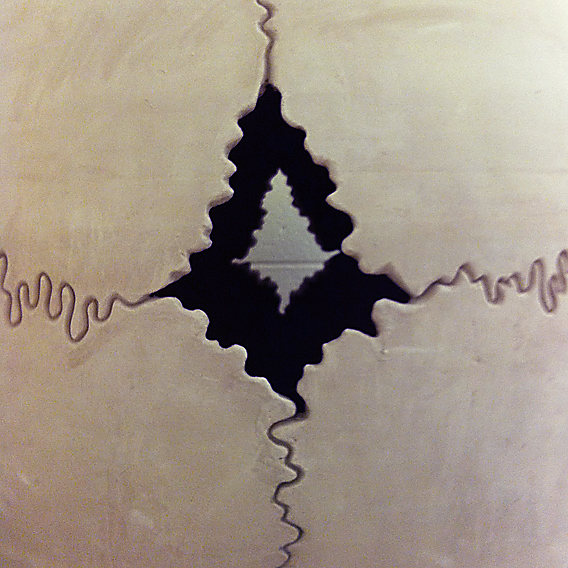
As I wrote in a previous post, in January/February 2012 I attempted two new vessel forms: a skull-like structure and a ribcage. The first two images here show my work in progress on the cranial vessel: the finished “cranium” before carving, and a detail of the carved sutures. The risky part was the top edge and two openings that reference a newborn human skull (chosen because of my preference for open forms). These cutouts are visible in the very first image above. Carving the sutures, however, required a lot less effort and concentration than I expected.
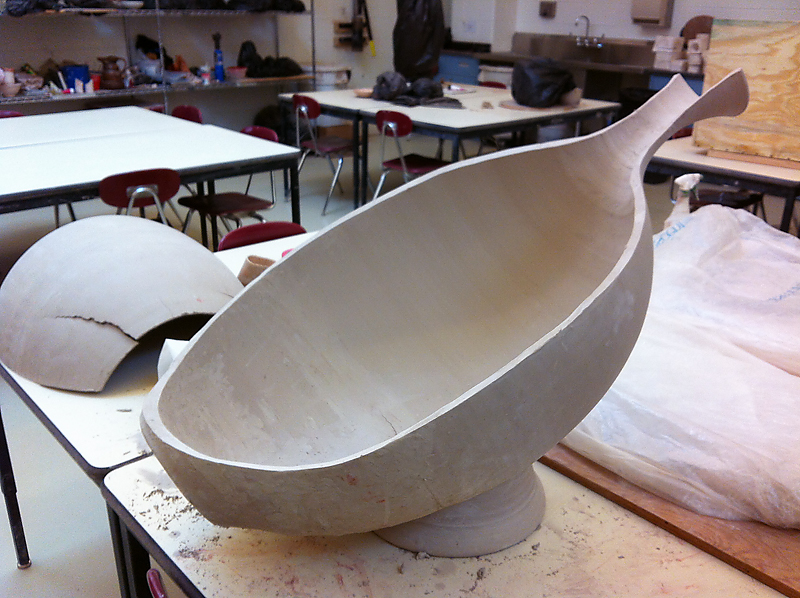
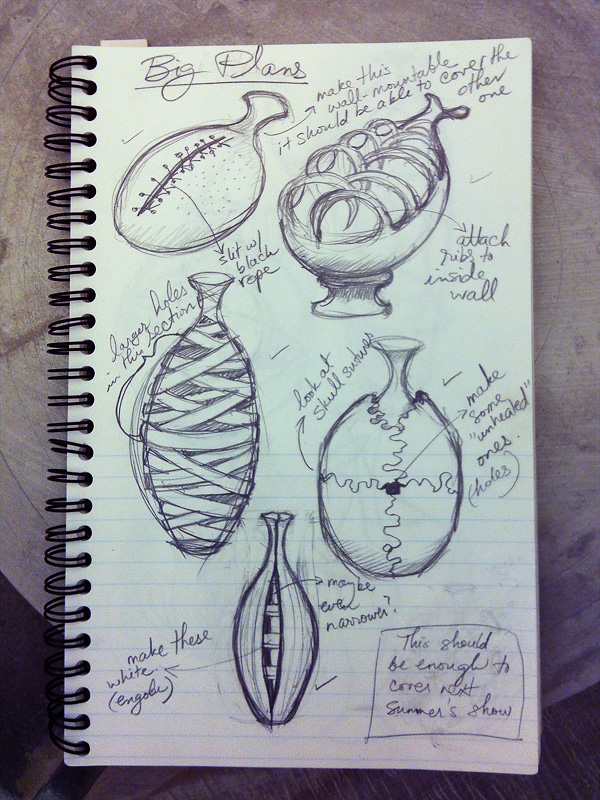
The third image shows my attempt at splitting a vessel and attaching it to a small stand that I built separately. My attempt at this vessel resulted in many unwanted rips and tears that are not really visible in the photograph. I realize now that I should have attached the stand before leaning the entire thing and cutting it in half. The next step would have been to attach a set of ribs to the interior walls of the vessel opening (as seen in the upper right corner of my sketchbook). With each new planned structure, I always encounter some sort of challenge and mistake that causes me to scrap the whole thing and start over. My portfolio doesn’t quite convey the trial and error aspect of the building process… After this particular disaster, I decided to give the ribcage piece a rest and to make clay for another piece that I built in the stop motion video.
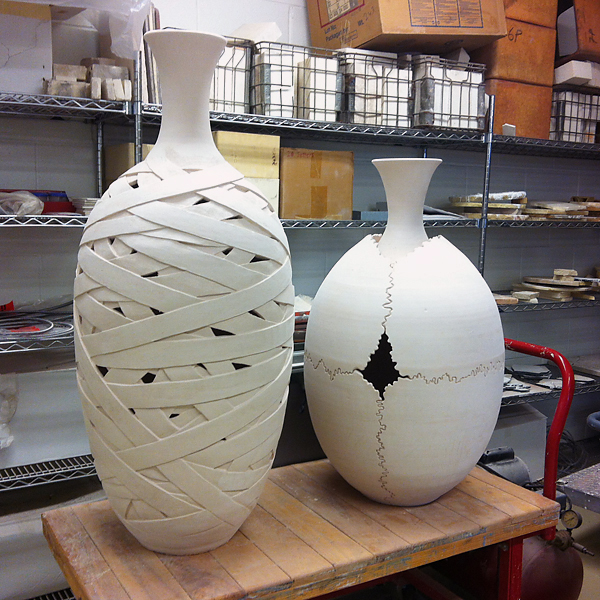
After I finished building the Stop Motion Vessel, which surprisingly worked out quite well despite the 10-year stretch since the last time I attempted a similar form, I bisque-fired the two vessels that did work out. The image shows them after the bisque firing, waiting to be glazed. While testing some glazes for these, I made a batch of very gritty terra cotta clay and began my second attempt at that split and tilted vessel with ribs… one week before leaving for New York. I rushed it, and it collapsed. The end.
I realized that the main driving force behind these vessels is the excitement I experience in the wake of the technical challenge I am faced with. This has been problematic for me, as I have personally felt a bit less compelled by work that relies on technical challenge as its main redeeming quality. Along with this qualm, I often encounter a time limitation while working on the vessels. I need approximately a month to complete one of them – two months if it’s a form that I haven’t tried before. In those two months, I come up with ideas for 10-15 new pieces. The work becomes perpetually backed up. All of these factors make for a questionable and frustrating process.
I’ve had a relatively different experience with my works on paper, like my hybrid medical scan work, and my Pareidolia drawings. The work tends to flow at a more reasonable pace (still not fully catching up with my creative ideas, but at least having enough of a chance to expand). This work also holds a bit more weight in my mind. The ideas are more potent, so to speak. The two bodies of work (Vessels and Pareidolia) have been closely related, but I generally feel a little more creatively invested in Pareidolia. I very rarely reveal all of the things that I’m thinking about while working on this series, but I definitely feel a lot more conceptually invested in it than I do in the vessels. That’s not to say that I won’t continue using a variety of media for my work, but I think that this recent change in attitude will change the work. My “serious” work requires a lot of creative energy, while other things that could also be construed as somewhat creative (Cooking? Writing this journal entry?) are not as intense. The vessels, with their emphasis on technical ability, have fallen somewhere in between.
Now that I’m at my second residency ever, I’ve realized that something happens when I leave my daily routine in Chicago and find myself in a new setting. There is a purging of sorts. As I pack my essentials for the trip (toothbrush, deodorant, etc.) leaving behind lots of things that I rarely use, I also find myself “packing” only the essential aims of my art. And I’m not referring to materials. As my neighbor Laura once put it, an artist’s residency is about “unplugging” one’s life at home and “plugging in” elsewhere. This eliminates all of the superfluous cobwebs of aspirations, ideas, and ambitions. The residencies enable a clear view into the essence of my art practice.
I am so happy to stumble upon your blog. I am using your stop motion vessel you tube video to show my high school students that are enrolled in intro to potter’s wheel. Your drawings and vessels are amazing, I am excited to share your work with my students.
Your description of being unsettled, then embracing that, then finding a break in location/routine in order to purge/focus is insightful. Your description of the intensity of creative energy and potency of various activities really shows your love for the activity. My work also involves technical challenge, leading to far more craft than art. But understanding the process you go thru – the journey – gives us deeper appreciation for the result.